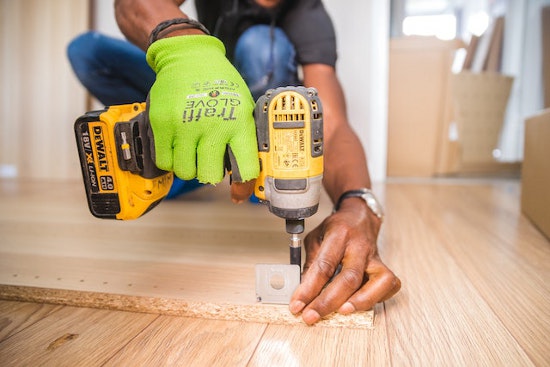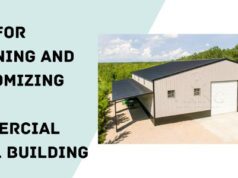Building your dream home can be an exciting yet challenging endeavor. The process involves a multitude of decisions, tasks, and coordination efforts. To ensure a smoother and more manageable home construction process, it is essential to plan meticulously and be well-prepared. In this article, you will explore eight key tips that can help you navigate the intricacies of home construction effectively. Whether building a house from scratch or undertaking a significant renovation project, these tips will guide you toward a successful outcome.


1. Establish a Clear Budget
One of the foundational aspects of any home construction project is setting a realistic and comprehensive budget. This budget should encompass all potential costs, from construction materials and labor to permits and unexpected contingencies. Builders insurance covers damages to your property during construction and is a crucial component of your budget planning. By allocating funds for insurance, you protect your investment and mitigate financial risks associated with accidents or unforeseen events.
A well-defined budget allows you to make informed decisions, prioritize your spending, and avoid costly overruns. It also ensures that your project remains on track, minimizing stress and financial strain throughout construction.
2. Select the Right Location
Location is pivotal in the value and satisfaction you derive from your new home. Take the time to research and select a location that aligns with your lifestyle, needs, and future plans. Consider factors such as proximity to work, schools, amenities, and safety. Additionally, assess the local zoning regulations and restrictions, as these can impact the design and feasibility of your construction project.
Choosing the right location enhances your quality of life and influences your property’s resale value, making it a crucial decision in the home construction process.
3. Collaborate with Experienced Professionals
The success of your home construction project heavily relies on the expertise of the professionals you choose to work with. From architects and engineers to contractors and interior designers, assembling a skilled team is paramount. Research and interview potential collaborators thoroughly, checking their credentials, portfolios, and references.
Furthermore, consider working with professionals with experience in navigating the complexities of builders’ risk insurance. They can help you understand your coverage options, ensuring you have the right level of protection for your project. A knowledgeable team will streamline the construction process, minimize errors, and contribute to the overall quality of your home.
4. Create a Detailed Construction Plan
A well-thought-out construction plan is your roadmap to success. Work closely with your architect and contractor to develop a comprehensive plan that includes detailed blueprints, timelines, and milestones. This plan should outline every aspect of the construction process, from the initial groundwork to the finishing touches.
By having a clear and organized construction plan, you can anticipate potential challenges, address them proactively, and maintain efficient progress. It also lets you monitor the project’s status and make informed decisions.
5. Obtain Necessary Permits and Approvals
Navigating local authorities’ bureaucratic requirements and regulations can be a daunting aspect of home construction. However, it is a crucial step to ensure that your project complies with all legal and safety standards. Failing to obtain the necessary permits and approvals can result in costly delays or even project shutdowns.
Work closely with your architect and contractor to identify the permits and approvals required for your project. Be proactive in securing these documents to avoid any legal complications. Additionally, ensure that your builders insurance coverage aligns with the project’s legal requirements to avoid coverage gaps.
6. Regularly Communicate and Monitor Progress
Effective communication is the cornerstone of a successful construction project. Maintain open and transparent communication channels with your construction team, including contractors, architects, and project managers. Regular updates and meetings allow you to stay informed about the project’s progress, address concerns, and make necessary adjustments.
Monitoring the construction process ensures that the work aligns with your expectations and the established timeline. Timely communication also enables you to promptly address any unexpected issues or changes, minimizing potential disruptions.
7. Quality Control and Inspections
Maintaining high-quality construction standards is vital for your home’s long-term durability and functionality. Implement a rigorous quality control process that includes regular inspections at various stages of construction. These inspections should cover structural integrity, electrical and plumbing systems, and workmanship.
Builders risk insurance can serve as an additional layer of protection during the construction phase. In the event of any damage or loss, your insurance coverage can help cover the costs of repairs or replacements, reducing financial burdens and project delays.
8. Plan for the Future
While your immediate focus can be on completing your new home, it is also essential to think about the future. Consider factors such as energy efficiency, maintenance requirements, and potential expansions. Planning for the long term ensures that your investment remains valuable and adaptable to changing needs.
Incorporate sustainable and energy-efficient features into your home design to reduce long-term operating costs and minimize your environmental footprint. Additionally, keep records of all construction documents and warranties, which will be invaluable for future maintenance and renovations.
Conclusion
Embarking on a home construction project can be a complex and demanding endeavor. However, following these eight key tips can significantly ease the process, reduce stress, and increase the likelihood of a successful outcome. Each step contributes to a smoother and more enjoyable construction experience, from establishing a clear budget to planning for the future. Remember to prioritize builder’s risk insurance to protect your investment and provide peace of mind throughout the project. With careful planning and the right team in place, your dream home can become a reality.









